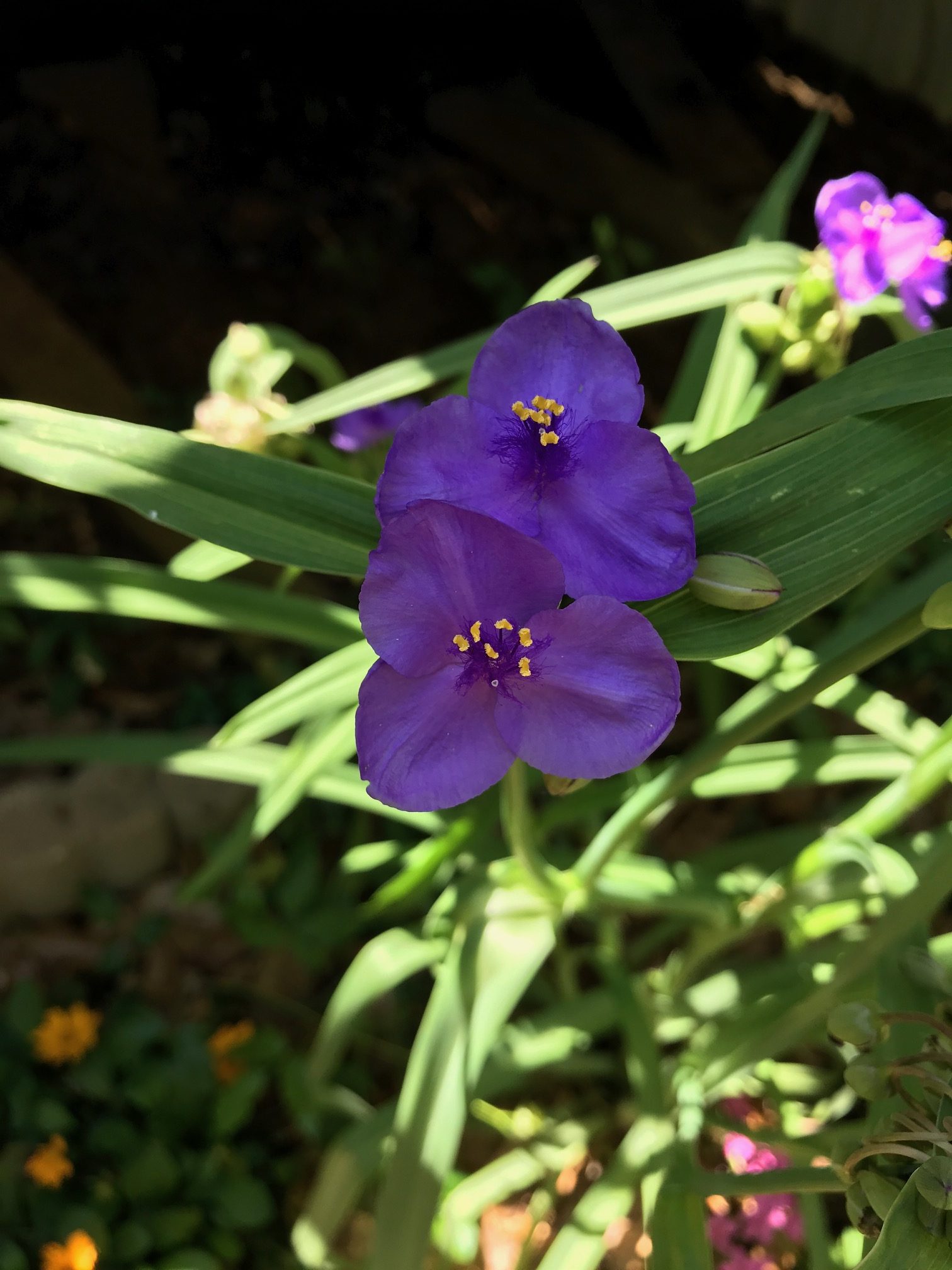
 As spring begins to bloom in earnest, many of our native plants start to show off. One of these plants is common Spiderwort (Tradescantia, Virginia). Spiderwort is commonly found in moist prairies, fertile woodlands, open woods, meadows, hillsides, stream banks, and roadsides. In more recent years, it has graduated to a more prestigious placement in people’s flower gardens.
As spring begins to bloom in earnest, many of our native plants start to show off. One of these plants is common Spiderwort (Tradescantia, Virginia). Spiderwort is commonly found in moist prairies, fertile woodlands, open woods, meadows, hillsides, stream banks, and roadsides. In more recent years, it has graduated to a more prestigious placement in people’s flower gardens.
The Spiderwort is a clumping perennial that spreads beneath the ground by stolon, which are long stems that form root points along their length. The Spiderwort grows two to three feet tall and a foot wide. Since it is a clumping plant, it is easily moved into gardens by digging up a group, dividing it into a smaller group, and then re-planting. Once flowering is finished for the spring, the stems will need to be cut back. The pruning of these plants can help control the spread of it since fallen stems will take root quite easily. Best of all, cutting stems back at the end of the spring blooming season will help to promote a second blooming during the fall.
Spiderwort is adorned with beautiful showy flowers that are usually purple. Still, there are some blue and pink varieties as well. The flowers are three-petaled with delicate spider web-like filaments surrounding the anthers. It is claimed that the delicate filaments are where the common name of the plant originated. Others argue that its name originated from the fact that the angular leaf arrangement of the plant suggests a squatting spider. The flowers are arranged on terminal clusters and open in the morning and begin to close around mid-day. Each flower only lasts about a day, but new flowers are produced daily. The flowers are attractive to bees, butterflies, and hummingbirds. Even though there is some debate as to where the common name originated, the origin of the genus name (Tradescantia) is quite clear. The genus name comes from the English plant explorer, John Tradescant, who discovered Spiderwort during colonial times. Not only was Tradescant a famous plant explorer, but he also served as a gardener to Charles I.
To the Native Americans, particularly the Cherokee, Spiderwort was a source of food and medicine. The Cherokee would use the young leaves of the plant as a salad green. They would also parboil or fry them with other wild greens. The Cherokee would take parts of the plant, mash it up, and rub it onto insect bites to relieve pain and itching. A poultice was made from the root to treat cancers. The Cherokee would also make a tea from the plant and drink it as a laxative and to treat stomachaches. Spiderwort was also one of seven ingredients used in tea to treat female ailments.
In summary, Spiderwort is a tall clumping, beautiful plant that blooms during the beginnings of springtime. To learn more about these lovely plants, explore the Native American Ethnobotany Database, Lady Bird Johnson Wildflower Center, and the USDA Plants Database.
